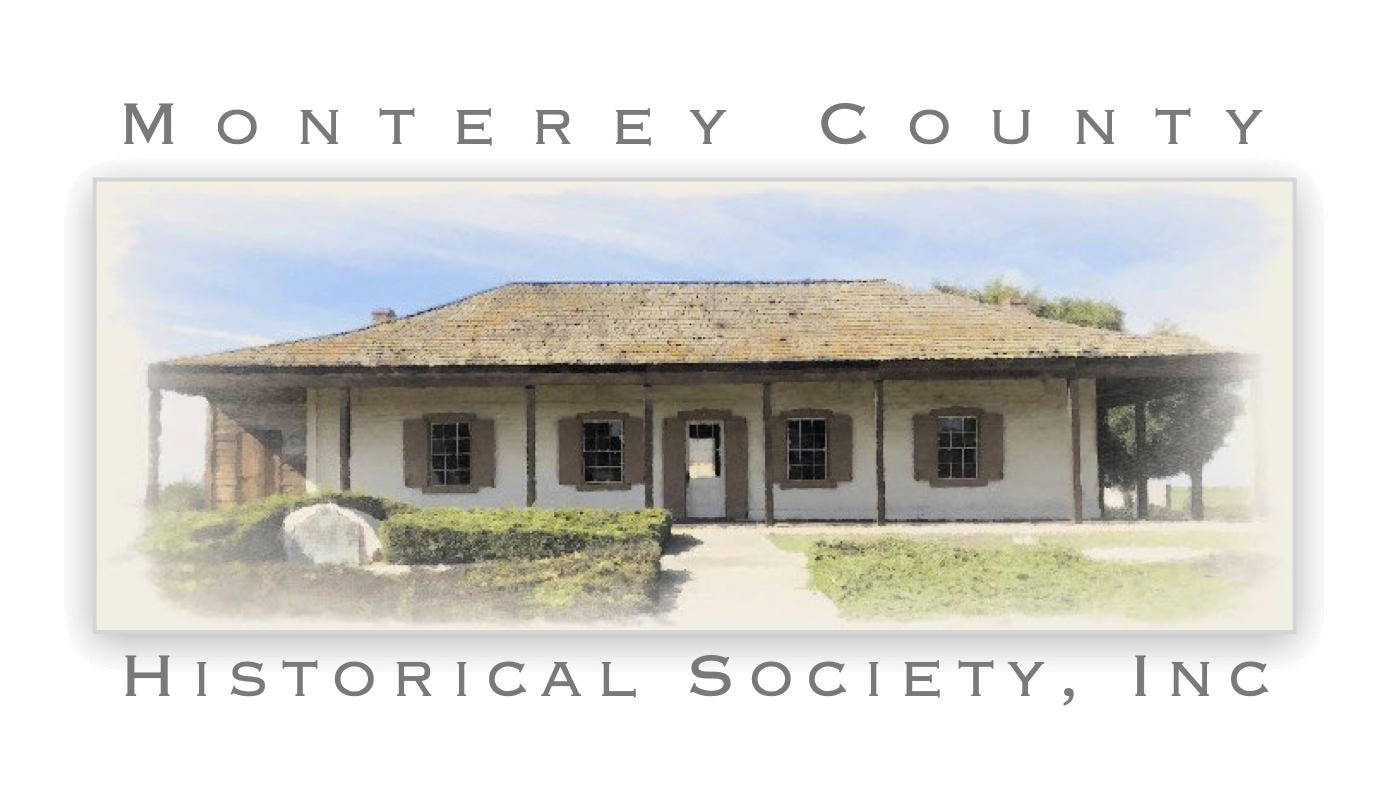by MaryEllen Ryan and Gary S. Breschini, Ph.D.
Nine days before the January 15, 1848 signing of the Treaty of Guadalupe Hidalgo, but unknown to the signers of that agreement, gold was discovered in the foothills of the Sierra Nevada. The accidental discovery, although occurring well outside the focus of the overview area, was to profoundly affect the number and motives of people migrating to California from that date forward, and consequently has profoundly affected the land use history of the overview area.
The “gold fever” epidemic and resulting mass migration to California was touched off in San Francisco by Samuel Brannan, an enterprising Mormon Elder and leader of a delegation of 200 Mormon settlers to California in 1846. Brannan was to appear from time to time in subsequent county histories within the overview area, particularly in Monterey County where he later became involved in mining investments. Brannan learned of the Sutter’s Mill discovery early in 1848, and proceeded to quietly buy up every article of merchandise available in northern California that would be in demand by an invasion of miners, then broke the news in vivid headlines in his own newspaper, San Francisco’s California Star. Every town in California was emptied of its able-bodied men in short order, including prisoners in the custody of their jailers.
In 1850, the population of Monterey County (which then included present-day San Benito County) was 1,872, and 1,092 of these people lived in Monterey (most Indians were not counted in that census). The population had been significantly higher a couple of years earlier; by 1850 as many as 1,000 people had already left Monterey to seek their fortunes in the gold fields.
The announcement had spread nationwide by the end of the year, and by the beginning of 1849 American and foreign gold seekers were fighting for passage on the sea routes around the horn, or by sea and land over the Isthmus of Panama, while the majority labored their way overland across the American continent in wagon trains miles long.
By the end of 1848, 6,000 miners had obtained some 10 million dollars worth of gold from the Sierra diggings; in 1849, 40,000 miners had extracted 30 million dollars worth of ore, and in 1852, 100,000 miners worked out 80 million dollars worth of gold. The Gold Rush drew the first transcontinental railroad to California instead of to Oregon as originally conceived; it brought in hundreds of thousands of people who, disillusioned with the conditions of the gold camps, looked over the agricultural valleys and vast stretches of rangeland. Embittered by the lack of success, or in many cases fueled by the state of mind fostered by the times in which greed predominated, they saw enormous tracts of inefficiently used land in American territory held under the monopolistic ownership of a Spanish speaking, Catholic people. Impatient with the terms of the recently signed treaty, and operating under the self-assurance that any land in the new territory was the God-given gift of spoils by conquest, the new settlers pushed for and got federal intervention in land policy in the form of the Land Act of 1851. The effects of the land act drastically altered land ownership and use in California over the next 20 years, and greatly encouraged permanent settlement among its intended sojourners.
The state became a land of adventuring strangers with the Gold Rush, a land characterized by an essential selfishness and an underlying instability. Its recently arrived inhabitants exhibited a fixation on the quick acquisition of wealth. The Gold Rush intensified and consolidated these traits as part of a regional experience. It brought to the region, in addition to the emigrants from eastern states, a great number of Europeans who began to affect Americans in matters of value and lifestyle, at least in the cities and circulated literature. Portions of the rural landscape were altered as well with the introduction of vineyards and orchards reminiscent of southern Europe.
Most significant, however, was the lasting influence of a large population who transferred the lifeways, industrial technology, architecture, political systems, educational systems, and cultural values of the eastern United States to California. Their imprint on the landscape was tempered and influenced by the multi-ethnic mix of Asian, South American, and European people who made California’s central coast valleys their permanent home by exercising choice or discretion.
Copyright 2000 by G.S. Breschini
Sources:
- Breschini, G.S., T. Haversat, and R.P. Hampson, A Cultural Resources Overview of the Coast and Coast-Valley Study Areas [California] (Coyote Press, Salinas, CA, 1983).


